- Joined
- Sep 24, 2012
- Messages
- 484
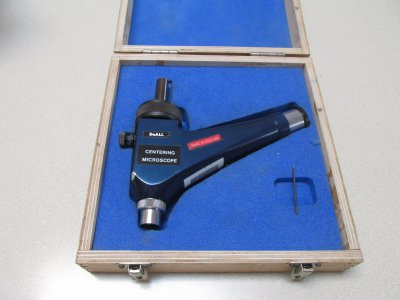
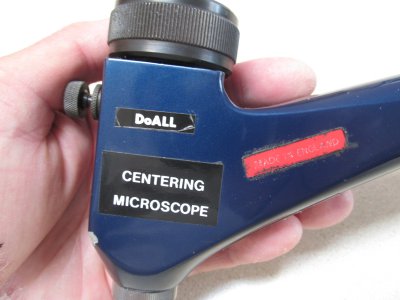
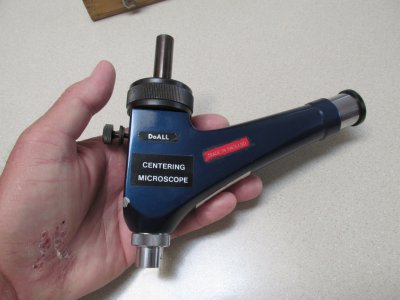
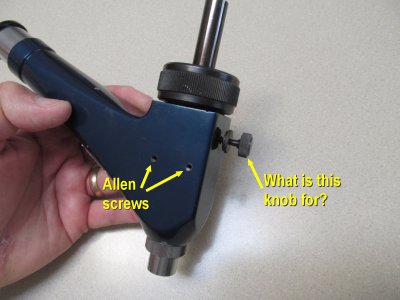
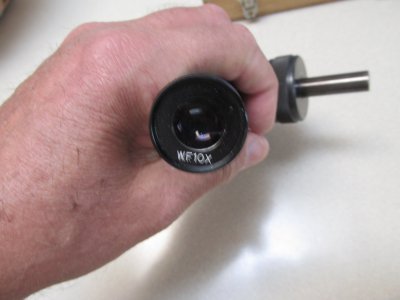 I just bought a nifty centering microscope on evil-bay for $125.00 which I thought was a good price. I've never owned one before, or seen one in person, so using it is all new to me. But it didn't come with any kind of maintenance instructions since it was used. Does anyone here have a similar one, and can tell me how the adjustments are made?
I just bought a nifty centering microscope on evil-bay for $125.00 which I thought was a good price. I've never owned one before, or seen one in person, so using it is all new to me. But it didn't come with any kind of maintenance instructions since it was used. Does anyone here have a similar one, and can tell me how the adjustments are made?Here are some pictures. Basically what I'd like to know is what the allen-head setscrews are for, and what the knurled adjusting screw is for. Also, notice a small rectangular inset in the blue foam in the wooden case - there is an allen wrench laid across it, but what would have originally been in the inset?
Thanks in advance.
Last edited:

